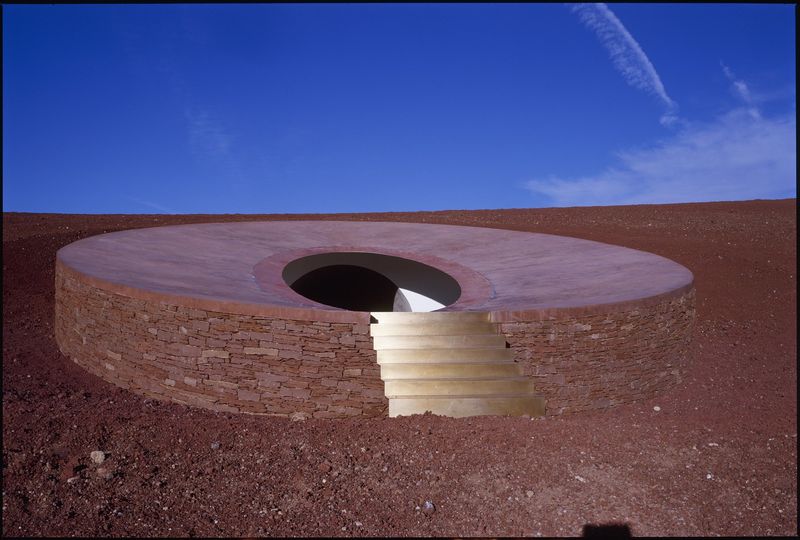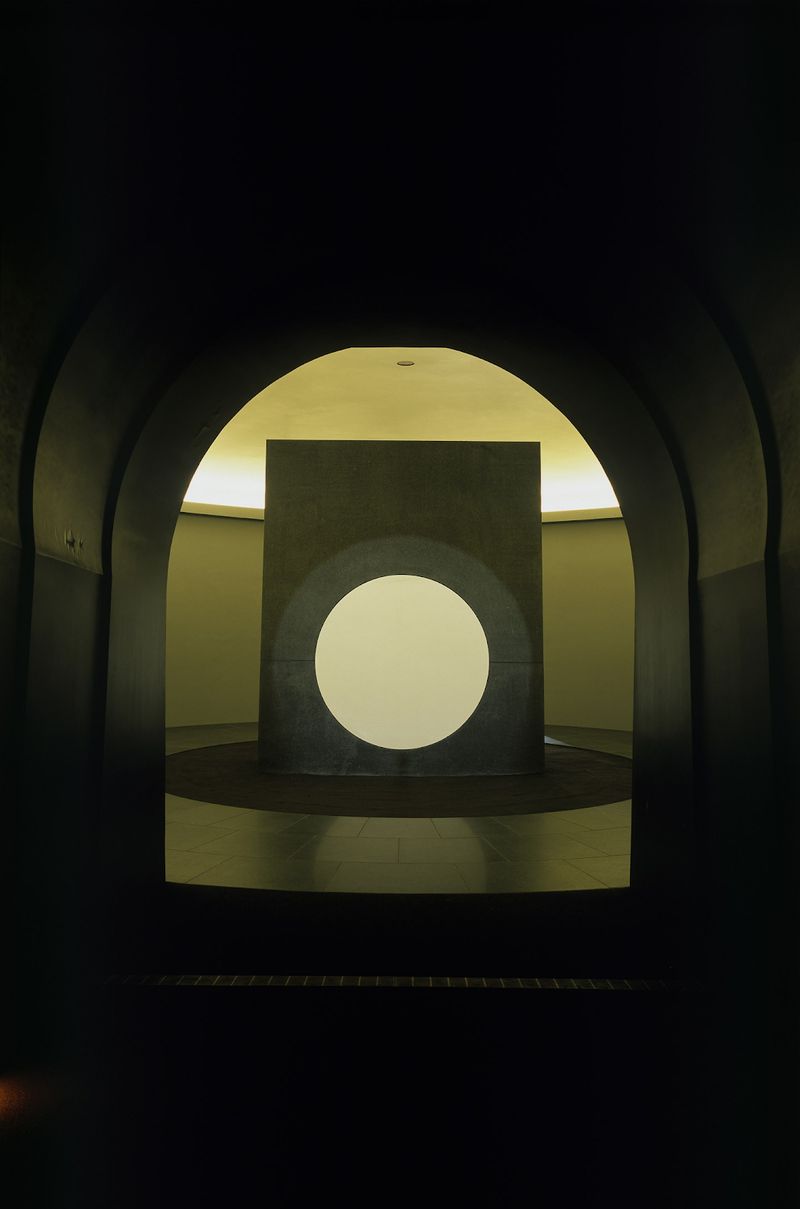
Roden Crater Bowl (courtesy of rodencrater.com)
The enormous installation has been built into the Roden Crater, which Turrell acquired in the 1970s. After consulting with astronomers, Turrell excavated parts of the Crater so a series of tunnels and apertures would align with celestial events that are visible to the naked eye. The Roden Crater has essentially been transformed into an artistic conservatory designed to allow the “spaces to perform a ‘music of the spheres’ in light”, according to the artist.

East Portal (courtesy of rodencrater.com)

Crater’s Eye (courtesy of rodencrater.com)

Crater’s Eye (courtesy of rodencrater.com)

Alpha (East) tunnel (courtesy of rodencrater.com)
Turrell studied and adapted essential features of other naked eye observatories around the world, including Jantar Mantar in Jaipur, India, when designing the Roden Crater. The artist considers the observatory to be a culmination of his lifelong research and work in the field of human visual and psychological perception. This piece has been in the making since the 1960s and is Turrell’s magnum opus.

Sun Moon Chamber (courtesy of rodencrater.com)
The installation consists of many spaces, each of them playing their own symbolic role in the ensemble. For example, the Alpha Tunnel, the Sun and Moon Chamber and the East Portal, which run through the center of the crater, act in concert as a Camera Obscura. In the days leading up to the winter solstice, the Camera Obscura is used to image the southernmost sunset for the year. A custom ground glass lens is used to sharpen the image. The South Space, which lies near the southern border of the Crater, is aligned with the North Star and acts as a calendar for the celestial events occurring within the 18 year 11 day Saros Cycle.
Winter Solstice Event recorded at Roden Crater on December 11, 2012
Roden’s Crater is currently closed to the public and no opening date has been announced. In the meantime, you can explore an interactive online map of the future installation. Turrell is fundraising to complete the project and hopes to open for the public shortly after completion.








